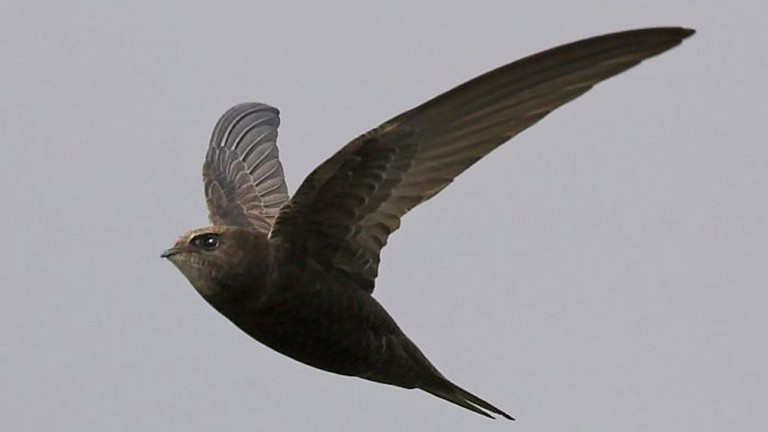It’s already the fastest bird recorded in level flight, now researchers have confirmed the common swift can fly for 10 months a year without coming down.
While scientists have long suspected the bird spends most of its life on the wing, the evidence collected has set a new record.
And the bird’s incredible journey may mean it travels as far as seven round-trips to the moon over its lifetime.
It’s already known that some birds remain in flight for periods of months, including frigate birds and alpine swifts and that the common swift (Apus apus) is adapted to an aerial lifestyle, where food and nest material are captured in the air.
Observations have prompted scientists to believe that common swifts stay airborne for their entire non-breeding period, including migration into sub-Saharan Africa.
To find out, researchers, developed a new type of micro data logger capable of recording acceleration to monitor the birds’ flight activity, and attached it to 19 birds that were later recaptured.
The data showed that common swifts spend more than 99 per cent of their time during their 10-month non-breeding period in flight.
‘When the common swifts leave their breeding site in August for a migration to the Central African rainforests via West Africa, they never touch ground until they return for the next breeding season 10 months later,’ said Anders Hedenström, a professor of ecology.
‘Some individuals may roost for brief periods, or even entire nights in mid-winter, but others literally never landed during this period.’
The birds’ flight activity often appeared lower during the day than at night, according to the study.
Professor Hedenström believes the birds probably save energy during the day by gliding in upward currents of warm air, as well as ascending to high altitudes at dawn and dusk.
However, the team does not know for sure whether or how the birds sleep.
The fact that some individuals never landed during 10 months suggests they sleep on the wing,’ he said, adding there is also a possibility the birds may find time to nap during slow descents at dawn and dusk.
It is this theory he and his colleagues hope to explore in future research.
Despite the high energetic costs associated with all that flight, common swifts also manage to live surprisingly long lives, contrary to popular belief that suggests they live fast and die young.
There are documented cases of common swifts living to the age of 20.
In that time, ‘the accumulated flight distance equals seven round-trip journeys to the moon,’ Professor Hedenström said.
Source: Daily mail
N.H.Kh

